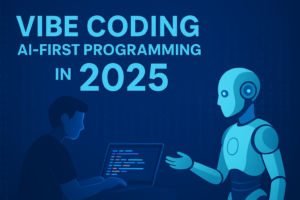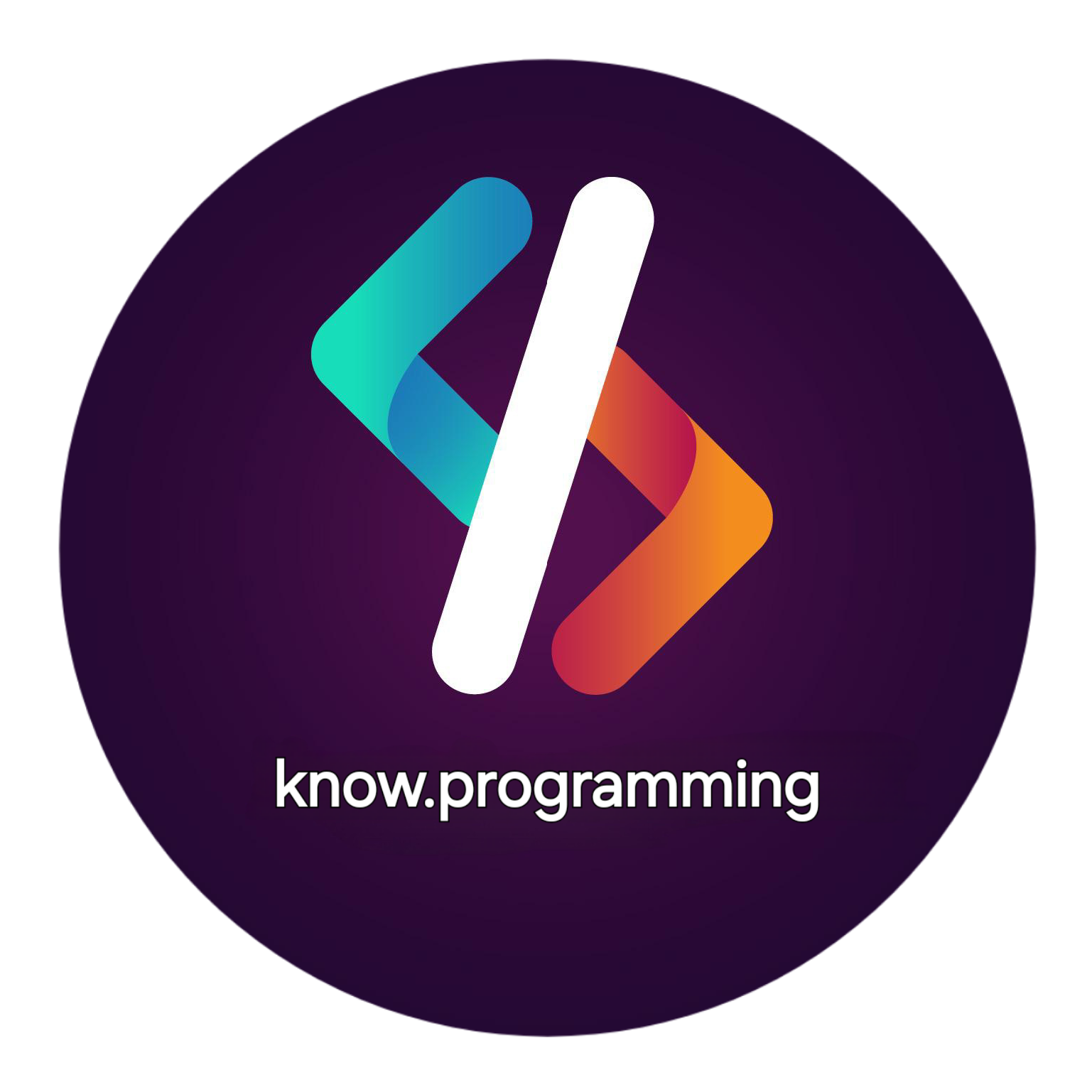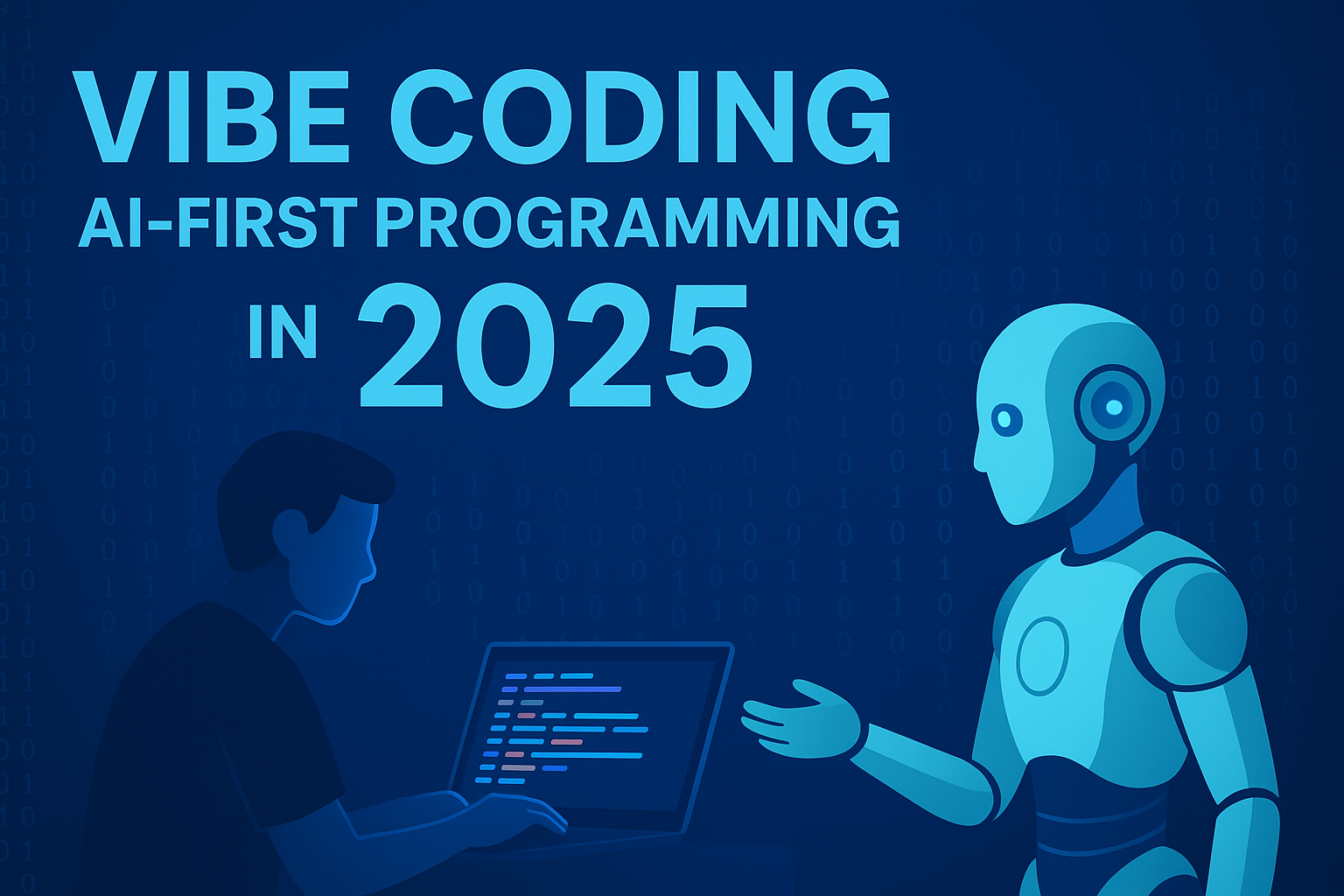Introduction: Why 2025 Is a Turning Point for Programmers
For decades, programming has evolved in cycles from punch cards to high-level languages, from local IDEs to cloud-based development, and from manual code review to automated testing. But 2025 has brought a seismic shift unlike any before:
We are officially in the era of AI-first programming where artificial intelligence is not just a tool but a co-creator in building software.
From Silicon Valley startups to Fortune 500 companies, developers are increasingly turning to AI-assisted programming tools that can write, optimize, and debug code in seconds. The most revolutionary among these is a new concept called Vibe Coding a term popularized by Andrej Karpathy earlier this year, which is quickly becoming the hottest buzzword in the developer community.
Paired with groundbreaking tools like Google’s Jules AI and the rapid adoption of GitHub Copilot, this shift is not just about faster coding it’s about redefining what it means to be a programmer in the age of intelligent machines.
What Is Vibe Coding And Why Is Everyone Talking About It?
Vibe Coding is the idea that developers can now “set the vibe” for their code instead of manually writing every line. In practical terms, this means giving your AI assistant:
-
Natural language prompts (“Build me a mobile app that tracks fitness goals”)
-
High-level design instructions (“Use a React front-end and Node.js backend with JWT authentication”)
-
Iterative feedback (“Make the UI look cleaner and improve load speed”)
The AI then generates, tests, and improves the code automatically often with minimal human intervention.

Why is this blowing up now?
-
Massive AI Model Improvements – The latest LLMs (like GPT-5) can understand context, project structure, and even refactor code without breaking dependencies.
-
Better Tool Integration – AI coding assistants are now directly integrated into IDEs like VS Code, JetBrains, and even browser-based editors.
-
Lower Entry Barrier – Non-programmers can build working apps by simply describing them in plain English.
In short: Vibe coding turns development from a line-by-line task into a conversation with your AI partner.
The GitHub CEO’s Warning: “Embrace AI or Get Out”
In a bold statement earlier this year, GitHub CEO Thomas Dohmke sent shockwaves through the developer community when he said:
“In 2025, if you’re not leveraging AI in your workflow, you’re already behind.”
He wasn’t exaggerating. GitHub’s data shows that AI-assisted commits are now over 50% of all code pushed on their platform. The trend is clear:
-
AI speeds up prototyping Developers can ship MVPs in days instead of weeks.
-
AI improves quality Automated code reviews catch security flaws instantly.
-
AI aids learning Junior developers can ask for instant explanations of unfamiliar code.
The takeaway? AI is not “replacing” developers — it’s replacing old workflows. The real risk is ignoring these tools and being left behind as teams that embrace AI outpace you.
Google’s Jules AI -The Non-Programmer’s Dream
On August 7, 2025, Google unveiled Jules AI, a tool designed to make app development accessible to anyone even those who have never written a line of code.
Here’s why it’s a game-changer:
-
Multi-Language Support – Generates clean, production-ready code in Python, JavaScript, HTML/CSS, Java, and more.
-
Cross-Platform Integration – Can connect your app to databases, payment gateways, APIs, and even IoT devices.
-
Security-First Approach – Runs generated code through built-in vulnerability scanners before deployment.
-
Plain-English Commands – You can type “Create a blog site with dark mode and newsletter signup” and watch Jules AI build it.
The implications are massive:
-
Startups can launch without a dedicated engineering team.
-
Small businesses can automate tasks without hiring developers.
-
Developers can focus on architecture and innovation while delegating repetitive tasks to AI.
Other Hot AI-Assisted Coding Tools in 2025
While Vibe Coding and Jules AI are grabbing headlines, there’s a whole ecosystem of AI-powered tools shaping the future:
-
GitHub Copilot X – Now with voice commands and real-time debugging suggestions.
-
Cursor AI IDE – Lets you edit, refactor, and generate code through conversational chat inside your editor.
-
Amazon CodeWhisperer – Optimized for AWS development and cloud infrastructure automation.
-
Tabnine Enterprise – Focuses on private, secure AI-assisted coding for corporate teams.
-
Replit Ghostwriter – Great for hobbyists and fast prototyping directly in the browser.
What This Means for Developers: Changing Roles & Skills
The age of AI-first programming doesn’t mean humans are obsolete but it does mean the role of a developer is evolving:
From:
-
Writing boilerplate code
-
Manually debugging
-
Memorizing syntax
To:
-
Designing high-level architecture
-
Auditing and improving AI-generated code
-
Ensuring security and compliance
-
Understanding AI model behavior
Risks & Challenges of AI-First Programming
Despite the hype, developers need to be aware of the pitfalls:
-
Over-Reliance on AI – Blindly accepting generated code can lead to security flaws or inefficient algorithms.
-
Loss of Fundamental Skills – If new devs skip learning core programming principles, they may struggle with debugging complex systems.
-
Ethical Concerns – AI can unintentionally include biased datasets or insecure practices.
-
Intellectual Property Issues – Some AI models have been trained on open-source code under restrictive licenses.
Practical Tips for Developers to Stay Ahead
-
Learn AI Tools Inside-Out – Master GitHub Copilot, Jules AI, or other assistants relevant to your stack.
-
Stay Hands-On – Even if AI writes your code, review it manually to catch inefficiencies.
-
Build Domain Expertise – AI can generate syntax, but it can’t replace deep business or industry knowledge.
-
Focus on Security – Always run AI-generated code through vulnerability testing.
-
Be Adaptable – Programming in 2025 is moving fast; keep experimenting with new tools.
Future Outlook: Where We’re Headed by 2030
If the trend continues, here’s what programming might look like in five years:
-
Natural Language-Only Coding – Entire apps built from voice commands.
-
Hyper-Personalized AI Dev Assistants – Trained on your coding style and project history.
-
Zero-Bug Deployments – AI detecting and fixing issues before they hit production.
-
Democratization of Development – Anyone with an idea can become a “developer” through AI tools.
Follow us on Instagram : know.programming
Final Thoughts
AI-first programming is not just a passing fad it’s a permanent evolution in how we create software. Whether you’re a junior developer, a startup founder, or a seasoned engineer, your competitive edge in 2025 depends on how well you integrate AI into your workflow.
The programmers who thrive will not be those who can write the most lines of code — but those who can ask the best questions and set the best vibes for their AI collaborators.

